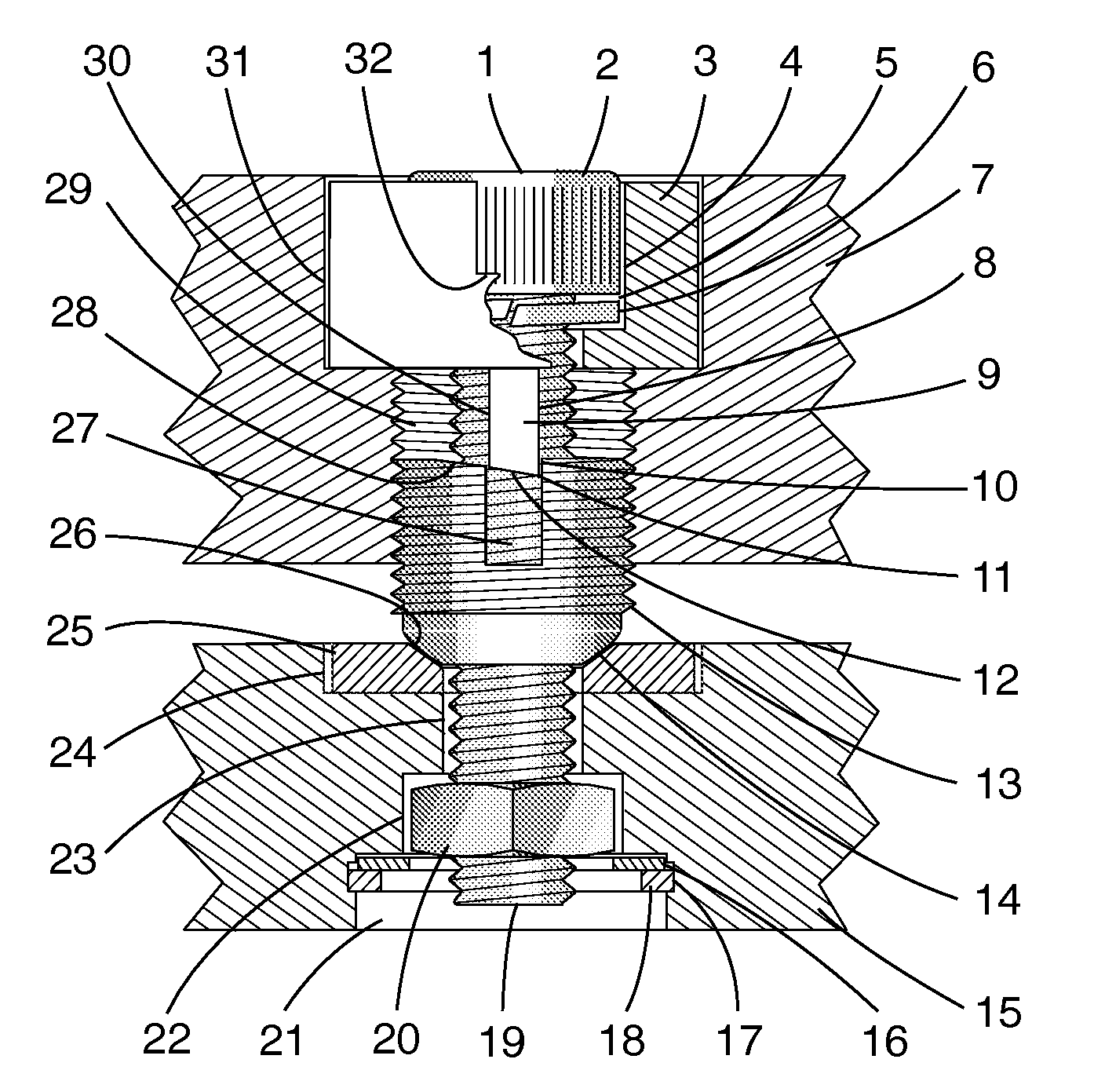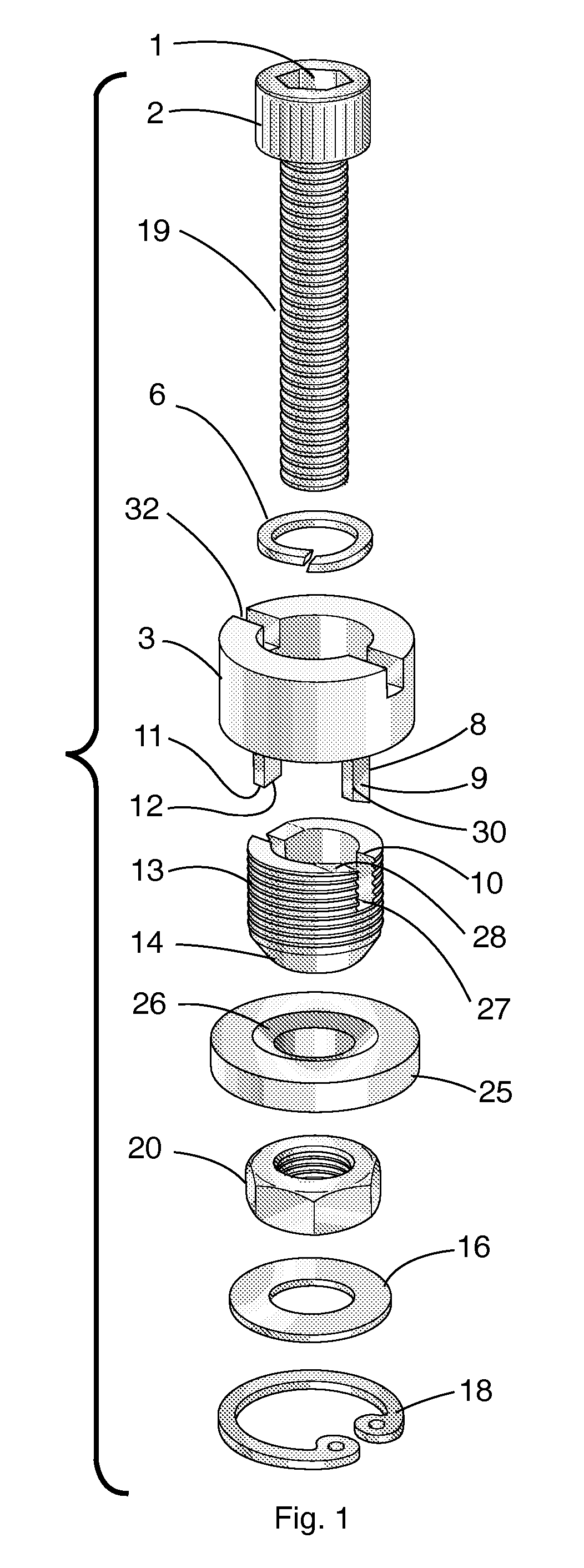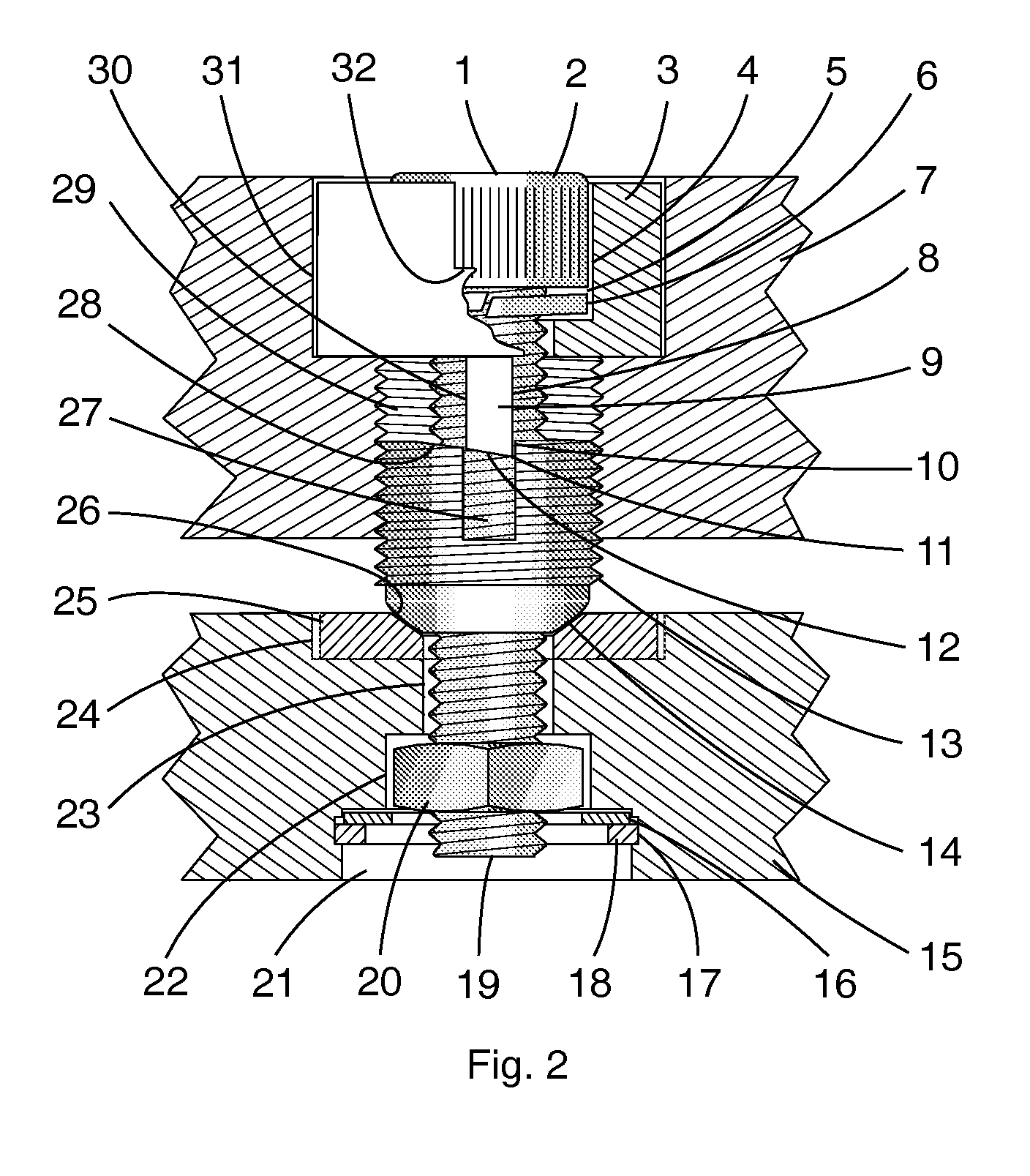Leveling and Aligning Device
a leveling and aligning device technology, applied in the direction of threaded fasteners, couplings, rod connections, etc., can solve the problems of difficult adjustment, bulky description of leveling devices, and inability to be hidden in the body of the member, so as to achieve the effect of easy adjustmen
- Summary
- Abstract
- Description
- Claims
- Application Information
AI Technical Summary
Benefits of technology
Problems solved by technology
Method used
Image
Examples
Embodiment Construction
[0015]As shown in the accompanying drawings FIG. 1 and FIG. 2, the preferred embodiment of the present invention comprises base 15 having round opening 23, and a shallow counterbore 24 for reception of insert 25 on the top. The bottom of base 15 also has an oval groove 22 for reception of captive nut 20 and grooved counterbore 21 for reception of washer 16 and internal retaining ring 18. Grooved counterbore 21, washer 16 and internal retaining ring 18 are an example of providing a means for loosely securing captive nut 20 in oval groove 22, and can be replaced with any means providing the same function.
[0016]Means are provided for supported member 7 to be variably positioned with respect to base 15. Member 7 is adjusted through the use of threaded jacking sleeve 13, which has slot 27 that engages with two prongs 9 of driving washer 3. Said adjustment is achieved when driving washer 3, located inside of counterbore 31 of member 7, is turned, employing prongs 9 to cause jacking sleeve...
PUM
 Login to View More
Login to View More Abstract
Description
Claims
Application Information
 Login to View More
Login to View More - R&D
- Intellectual Property
- Life Sciences
- Materials
- Tech Scout
- Unparalleled Data Quality
- Higher Quality Content
- 60% Fewer Hallucinations
Browse by: Latest US Patents, China's latest patents, Technical Efficacy Thesaurus, Application Domain, Technology Topic, Popular Technical Reports.
© 2025 PatSnap. All rights reserved.Legal|Privacy policy|Modern Slavery Act Transparency Statement|Sitemap|About US| Contact US: help@patsnap.com



